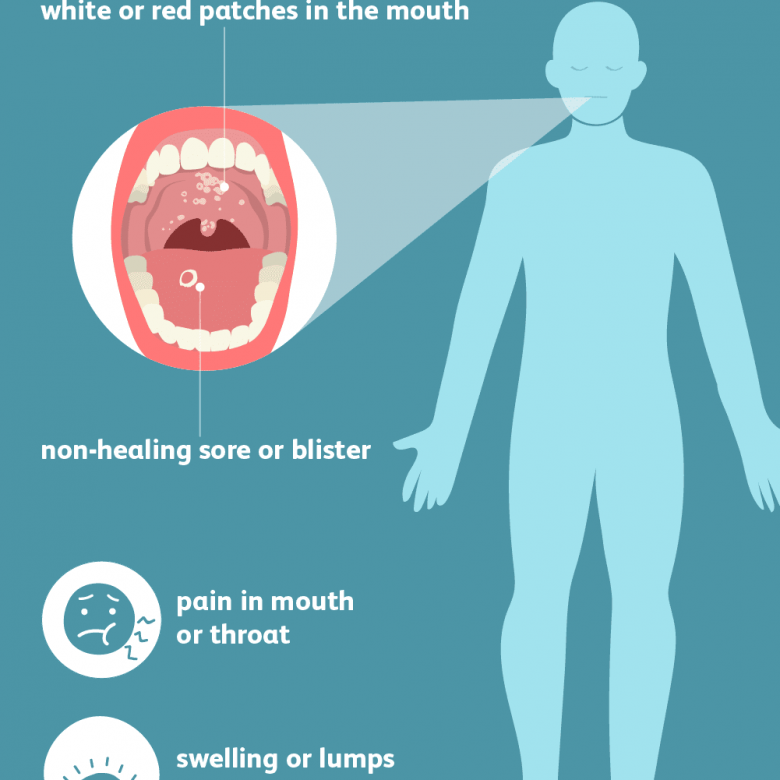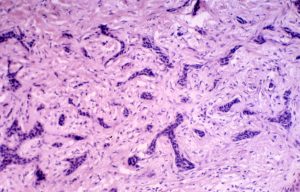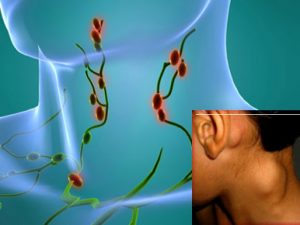The constant impact on the human body of negative environmental factors can lead to the start of the oncological process. Combustion products of tobacco, alcohol metabolites are especially active in the oral cavity. Among other negative factors, incorrectly selected dentures, chewing tobacco. Cheeks, tongue, gum surface, upper or lower jaw, red border of lips – all of this is in the zone of dangerous exposure.
However, atypical cells also arise as a result of long-term ongoing diseases, which are manifested by significant changes in the oral mucosa and lead to the development of an oncological process. It must be remembered that timely treatment of such conditions is the most reliable method of cancer prevention.
Among precancerous diseases that require dynamic monitoring by a specialist:
A single, small white spot that does not rise above the mucous membrane is not at all a harmless formation. This is called leukoplakia – an area of keratinization of the mucous membrane, often localized on the cheek or tongue.
A similar spot, only reddish in color, is also a cause for concern. This is erythroplakia – a change in the mucous membrane caused by the human papillomavirus.
Oral Cancer Symptoms
Malignant lesion of the oral mucosa in the process of its formation goes through a number of stages, each of which has its own characteristics. At the initial stage of cancer of the oral mucosa, an unpleasant sensation in the mouth appears, similar to the sensation of a foreign body. With a close examination of the oral cavity, you can notice spots, formations that rise above the mucous membrane, sores or dense areas. Pain syndrome occurs in a quarter of cases. It is easy to confuse it with the manifestation of dental pathology or colds of the oropharynx.
The nature of the manifestations depends on the form of the tumor lesion:
Ulcerative form – the formation of small, superficial ulcers. The most common form.
The nodular form, manifested by the compaction of the tissue, is painted with a whitish color along the periphery. Dense areas have clear edges, develop rapidly and increase in size.
The papillary form is characterized by the development of characteristic outgrowths in the oral cavity, covered with a normal mucous membrane.The period of extended clinical manifestations is characterized by diversity. The main symptom is pain. It is clearly localized at the site of the lesion, but sometimes it is carried out in the temple, occiput or ear region. Patients often complain of increased salivation, bad breath.The neglected period develops with prolonged and persistent ignorance of the process. Symptoms become more vivid and pronounced. The process can penetrate and destroy the tissue surrounding the tumor. Such an aggressive state requires the immediate intervention of doctors.
Treatment
The optimal effective therapy is selected depending on the form of cancer, the severity of clinical symptoms and the stage of the disease. In the treatment of cancer of the oral mucosa, all methods of treating malignant neoplasms are used:
Surgical treatment – excision of the affected area of the mucous membrane.
Chemotherapy https://en.wikipedia.org/wiki/Chemotherapy is the systemic administration of toxic drugs.
Radiation therapy is the effect of radiation on cancer cells.
These methods give a good healing effect, but each of them has its own “disadvantages”. Accounting for complications makes the selection of the optimal therapy extremely difficult. After all, the main goal of treatment is to help the patient, and not to cause more harm to his body. Today, photodynamic therapy is an excellent addition to these clinical methods of treatment. The drugs used are capable of accumulating in atypical cells and destroying them when exposed to light rays of a certain length, without affecting healthy tissues. In this case, the drug is heated in the maximum amount within 2 – 3 hours, and is excreted from the body within 24 hours. The selection of the optimal therapy is the main point in the treatment of oral cavity cancer. But in order to prevent its development, it is necessary to timely, correctly identify and treat precancerous conditions.



